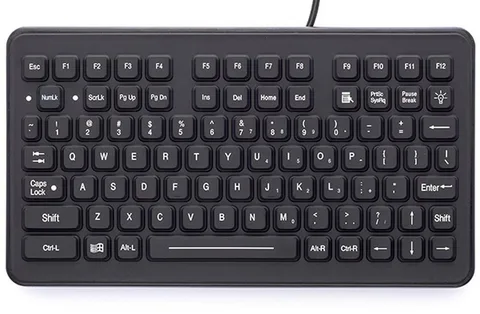The global sales of computer keyboard is projected to be worth USD 6.74 billion in 2025 and expected to reach a value of USD 9.58 billion by 2035. Sales are estimated to rise at a CAGR of 3.6% over the forecast period between 2025 and 2035.
In an age of voice assistants, touchscreen interfaces, and gesture-controlled devices, one piece of hardware has refused to fade quietly into the background: the computer keyboard. Often overlooked and underappreciated, keyboards remain the primary gateway between humans and machines—a blend of precision, familiarity, and functional depth that no other input method has fully replaced.
Far from becoming obsolete, the keyboard is undergoing a quiet renaissance. From mechanical switches to ergonomic layouts and programmable keys, today’s keyboards are evolving to meet the diverse needs of gamers, creators, remote professionals, and everyday users. In the digital era, typing is still the most efficient way to create, command, and communicate—and the keyboard is the tool that makes it possible.
Get Ahead with Our Report: Request Your Sample Now!
https://www.futuremarketinsights.com/reports/sample/rep-gb-269
Beyond Typing: A Platform for Productivity and Expression
What was once a basic peripheral has become a customizable tool for performance, comfort, and creativity. Mechanical keyboards offer tactile feedback and switch variety tailored to user preferences. Ergonomic designs reduce strain and support long hours of work. RGB lighting and hot-swappable layouts give users control over both aesthetics and function.
For content creators, programmers, and gamers alike, keyboards have become an extension of the hand—tools that demand precision, speed, and personalization. Whether it’s macro commands in a game, code snippets for development, or shortcut-laden workflows in video editing, the keyboard is the central controller.
Overshadowed by Screens, Rooted in Utility
While the tech spotlight often shines on smartphones, tablets, and foldable displays, the keyboard quietly powers the majority of productivity tools, from writing and data entry to programming and command-line tasks. The reliability and tactile control it offers are unmatched by virtual alternatives.
Even in mobile computing, detachable and compact keyboards have found a place. As users look for ways to enhance tablets or work comfortably on-the-go, compact and wireless keyboards provide the bridge between portability and full-function productivity.

Real-Time Responsiveness in Every Keypress
Behind each keystroke lies a complex interaction of engineering and user experience. Advanced key switches reduce latency for faster input recognition. Anti-ghosting and N-key rollover ensure that complex commands register precisely. These enhancements, once exclusive to high-end gaming gear, are now becoming standard across consumer and professional models.
Beyond hardware, software integration is pushing the keyboard into smarter territory. AI-assisted predictive typing, customizable layouts, multilingual support, and cloud-synced shortcuts are turning the keyboard into an adaptive interface tailored to how each individual works and communicates.
A New Canvas for Innovation and Identity
Keyboards have also become a canvas for self-expression and brand identity. From artisan keycaps to themed layouts and minimalist designs, the keyboard reflects the personality of its user. For businesses, custom-branded keyboards serve as subtle tools for brand consistency. For enthusiasts, building a custom keyboard is as much about craftsmanship as it is about functionality.
Meanwhile, sustainability is emerging as a new driver of innovation. Manufacturers are exploring eco-friendly materials, modular designs for longevity, and repairable components—aligning the keyboard market with broader shifts in responsible technology development.
Thorough Market Evaluation: Full Report
https://www.futuremarketinsights.com/reports/computing-device-keyboards-market
Tied to Comfort, Efficiency, and Digital Fluency
A keyboard does more than register input—it shapes the speed, clarity, and comfort of digital communication. A poorly designed keyboard can lead to fatigue or injury, while a well-crafted one can boost efficiency and reduce cognitive load. In educational settings, keyboard fluency is a core skill for digital literacy. In professional environments, it defines how fast and effectively work gets done.
As hybrid work and remote collaboration become the norm, users increasingly seek keyboards that are portable yet powerful, quiet yet responsive, stylish yet durable. This blend of demands is driving innovation across materials, form factors, and connectivity solutions.
The Quiet Constant in a Shifting Digital Landscape
The computer keyboard may not dazzle with flashy innovation, but its relevance remains unshaken. It’s the silent engine behind documents, emails, code, and commands. It’s the first tool we teach and the last we let go.
Ignore its role, and the digital experience becomes clumsy and constrained. Embrace it, and the keyboard transforms into a finely tuned instrument—enhancing expression, execution, and engagement across every domain of work and play.
In a world chasing what’s next, the keyboard remains a trusted interface between thought and action—clicking quietly, typing endlessly, and evolving steadily with the pulse of progress.






